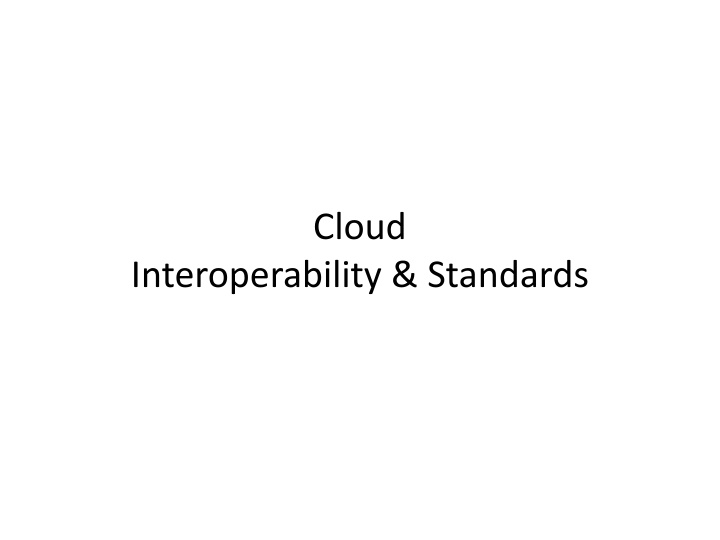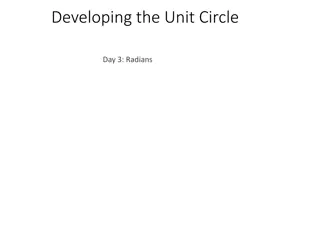
Exploring Cloud Interoperability and Standards for Scalable Solutions
Dive into the world of cloud computing with a focus on cloud interoperability, standards, scalability, fault tolerance, cloud ecosystem, business process management, service management, and analytics. Discover the strategies and tools essential for effective cloud management in today's dynamic digital landscape.
Uploaded on | 1 Views
Download Presentation

Please find below an Image/Link to download the presentation.
The content on the website is provided AS IS for your information and personal use only. It may not be sold, licensed, or shared on other websites without obtaining consent from the author. If you encounter any issues during the download, it is possible that the publisher has removed the file from their server.
You are allowed to download the files provided on this website for personal or commercial use, subject to the condition that they are used lawfully. All files are the property of their respective owners.
The content on the website is provided AS IS for your information and personal use only. It may not be sold, licensed, or shared on other websites without obtaining consent from the author.
E N D
Presentation Transcript
Cloud Interoperability & Standards
Scalability and Fault Tolerance Fault tolerance is the property that enables a system to continue operating properly in the event of the failure of (or one or more faults within) some of its components.
Cloud ecosystem is a term used to describe the complex system of interdependent components that work together to enable cloud services. Cloud Business process management (BPM) is a systematic approach to making an organization's workflow more effective, more efficient and more capable of adapting environment. A business process is an activity or set of activities that will organizational goal. to an ever-changing accomplish a specific
Cloud Service Management. Cloud management means the software and technologies designed for operating and monitoring applications, data and services residing in the cloud. Cloud management tools help ensure cloud computing-based resources are working optimally and properly interacting with users and other services.
Cloud Management Strategies Cloud numerous tasks including performance monitoring (response times, latency, up-time, etc.), security and compliance auditing and management, and initiating and overseeing disaster recovery and contingency plans. With cloud computing growing more complex and a wide variety of private, hybrid, and public cloud-based systems and infrastructure already in use, a company s collection of cloud management tools needs to be just as flexible and scalable as its cloud computing strategy. management strategies typically involve
Cloud Analytics Cloud technological techniques specifically designed to help clients extract information from massive data. Cloud Analytics is designed statistical data readily available via the users web browser. Analytics is term analytical for a set of and tools and to make official and categorized
Virtual desktop infrastructure (VDI) Virtual desktop infrastructure (VDI) is the practice of hosting a desktop operating system within a virtual machine (VM) running on a centralized server. VDI is a variation on the client/server sometimes referred computing. The term was coined by VMware Inc. computing to as model, server-based
Operating System Virtualization Microsoft Infrastructure (VDI), powered by Windows Server 2012, empowers you to deploy remote desktop services architectures that provide employees the flexibility to work anywhere, while seamlessly access their corporate windows desktop or application running in the datacenter from a range of devices. Virtualization Desktop allowing them to environment






















